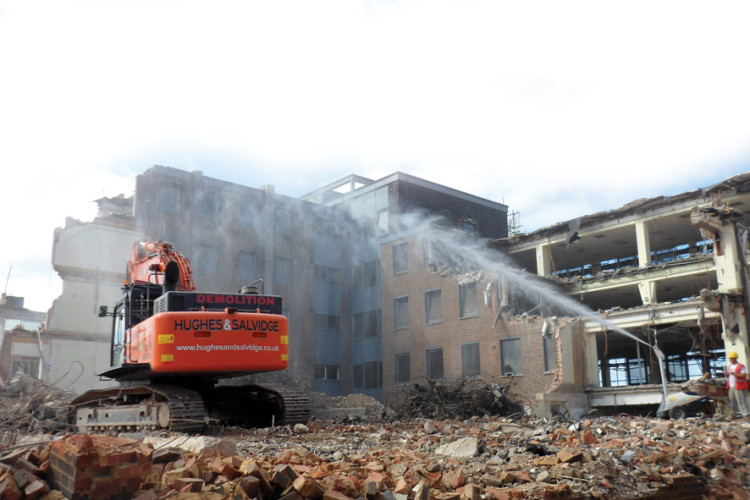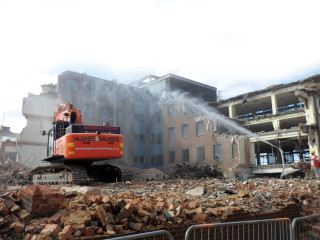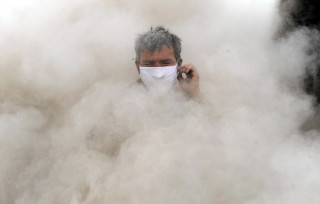Ever since mankind started building, dust has been regarded as an occupational inconvenience for construction workers. Only recently has it been acknowledged as a serious danger to health.
Many health and safety specialists believe that the seriousness of exposure to dust has been overshadowed in recent times by the undoubtedly more serious danger posed by asbestos.
But besides being unpleasant to work in, dust – and in particular, ‘respirable crystalline silica’ (RCS) dust – can seriously damage your health, abrading the lung tissues and causing scar tissue to develop.
It’s also a serious public nuisance and while it is possible to protect site personnel from inhalation using personal protective equipment, the only way of preventing dust escaping into the general environment is to contain it at source.
John Polak, managing director of Winchester-based equipment importer Inmalo, says that dust is now the construction industry’s “public enemy number one”.
“It used to be noise. Noise was a big problem, especially in demolition,” explains Polak. “The industry is more aware, partly because of the amount of urban regeneration work being carried out.”
In cities, especially, dust becomes a major problem because of the proximity of sites to neighbouring properties. “And it’s not just demolition work; it’s also recycling, which often takes place in-situ. Really, it’s the whole construction process,” says Polak.
Polak’s interest in the dust problem is not unconnected with the fact that he imports and sells specialist dust suppression equipment. Inmalo offers a range of machines suitable for most applications, including major demolition sites: “Now there’s no excuse,” says Polak.
Dust suppression takes a number of forms, but most equipment currently available uses a fine mist of water projected in a controlled manner to intercept and neutralise dust particles floating in the air.
Inmalo offers two types: an electrically-powered machine from US manufacturer Dust-Boss, and the Moto-Fog compact, trolley-mounted diesel-powered machine. In both cases, water droplets are generated and delivered either via a nozzle or, with the larger machines, by blowing a cloud of droplets out with a fan.
The largest machine in the Inmalo range is the Dust-Boss DB60, an electric “cannon”-type machine which blows a dense cloud of droplets out to a range of up to 60m.
These machines, according to Polak, are developed from snow-generating machinery and are powerful enough to envelop relatively large and dusty sites.
If the idea of using a water spray to suppress clouds of dust sounds like an obvious and unoriginal idea, it’s worth looking at the theory behind it.
“The traditional method is simple: it’s a man with a hose,” says Polak. “But that’s not really effective.” Fine dust particles can simply float between large water droplets if the spray is too coarse, he says. “And you’ve got to pay the bloke just to stand there holding a hose, so it’s not cost-effective, either,” he adds.
Even the more sophisticated technique of pumping water through a hose fixed to an excavator boom and directing a spray of water onto the breaker or muncher itself is not as effective as you might expect.
“Dust isn’t just generated at the point of impact,” points out Polak. “When that rubble falls to the ground it kicks up a big cloud of dust as well,” he says.
The technology behind Inmalo’s dust-suppression machines is precise. In particular, the size of the water droplet is critical and needs to be a certain size in order to bond with the dust particles and clear the air.
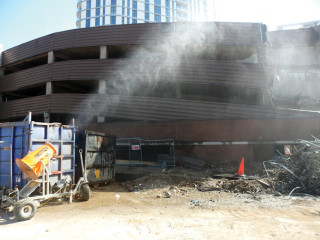
.png)
Contrary to popular belief, the purpose of dust-suppression equipment isn’t to spray water all over the area and damp everything down, but to create a barrier that prevents the spread of dust. The particles drift in the air until they are intercepted by the mist of droplets and fall to the ground.
Not surprisingly, the positioning of the spray and consideration of wind drift is critical, says Polak.
The development of these dust-suppression machines is a relatively recent phenomenon; Polak says they first appeared in the UK only in 2008. Since bringing the first machines into the country, Inmalo has sold approximately 400 of them and it currently operates a significant number in its hire fleet as well.
Some demolition contractors have embraced the technology with enthusiasm – Keltbray currently has no fewer than 12 units operating on its Earl’s Court contract (a textbook application for the technology, according to Polak).
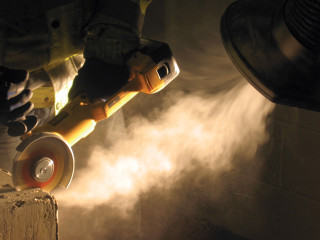
But there are some who remain to be convinced. “Some contractors don’t bother with dust suppression, either because their site isn’t in a sensitive area, or they calculate that the dust won’t be a nuisance and think it’s worth taking the risk,” says Polak.
“I have one good customer who only ever hires the equipment, whereas others prefer to buy them. This is because he doesn’t see the need to use one on every job."
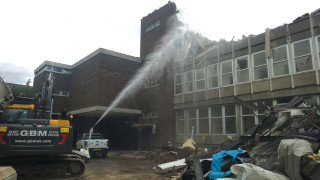
That might indeed be the case, but Polak points out that the Environment Agency is taking a sterner line on dust pollution from construction sites, just as it has with noise.
And like noise, dust concentrations can now be measured accurately using sophisticated monitoring equipment. There are statutory limits to the permissible level of exposure to silica dust and HSE inspectors are empowered to shut down sites that exceed those limits.
Equipment manufacturers have been able to respond to stricter noise regulations by designing quieter machines - for example there are now “city” versions of hydraulic breakers - the great noise-generators of the plant world.
“But I can’t see that happening with dust,” says Polak. “You can’t design breakers or munchers that produce less dust. So for the foreseeable future, I can’t see an alternative to our machines when it comes to controlling dust on site.”
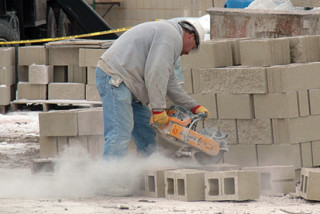
Danger of dust
Concrete, brick, stone and similar materials can contain between 20% and 70% crystalline silica. Construction processes involving these materials can release respirable crystalline silica (RCS) dust into the air – sharp crystalline particles which can damage tissue in the gas exchange region of the lungs.
Exposure can lead to a number of serious health problems including silicosis, Chronic Obstructive Pulmonary Disease (COPD), bronchitis, emphysema and lung cancer.
The construction industry is the largest volume consumer of silica-containing materials and anyone working with these materials is likely to be exposed to RCS to some extent. A recent review of literature by the Health & Safety Laboratory suggested there are roughly half a million construction workers with the potential for silica dust exposure.
The same review estimated that silica dust exposure leading to lung cancer is responsible for over 800 deaths a year.
As a hazardous substance RCS is covered by the Control of Substances Hazardous to Health Regulations 2002 (CoSHH). The daily Workplace Exposure Limit (WEL) for RCS is currently 0.1mg of dust per cubic metre of air. This is a very small amount – a pile of dust smaller than your thumbnail.
Even this tiny amount is not safe. The exact links between dust exposure and the instance of health effects are complicated and the subject of ongoing research, but essentially more exposure means more risk so exposures should be as low as practicably possible.
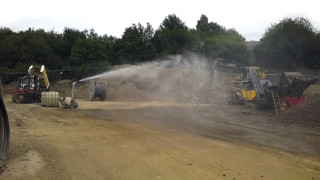
Got a story? Email news@theconstructionindex.co.uk

